Totally Tropheus

Tropheus moorii are freshwater aquarist favorites both inside and outside this building. They bring amazing color, activity and hardiness. They originally hail from the largest of the famous “African Rift Lakes,” Lake Tanganyika. This lake (and its smaller siblings) has provided the world with a jaw dropping selection of gregarious, gorgeous and kind of cantankerous Cichlids for more than half a century now! That being said, the Tropheus Cichlids have a penchant for reproduction, and as such, are readily and consistently available from aquaculture facilities.
As a result of hundreds, if not thousands) of generations of aquaculture, Tropheus moorii are now available in an ever-growing number of variants. Once upon a time, this Cichlid was identifiable by their striking vertical barring with splotches of brilliant color, now they come in a wide range of colors and patterns. Tropheus Cichlids are interesting in that they really aren't that aggressive with fish that don't look like cichlids, but they are very aggressive with other Tropheus. One of the best displays for keeping them is to keep a large group, think more than a dozen. Luckily, you can feel free to mix and match the different colors of Tropheus moorii, and here's a few ideas:
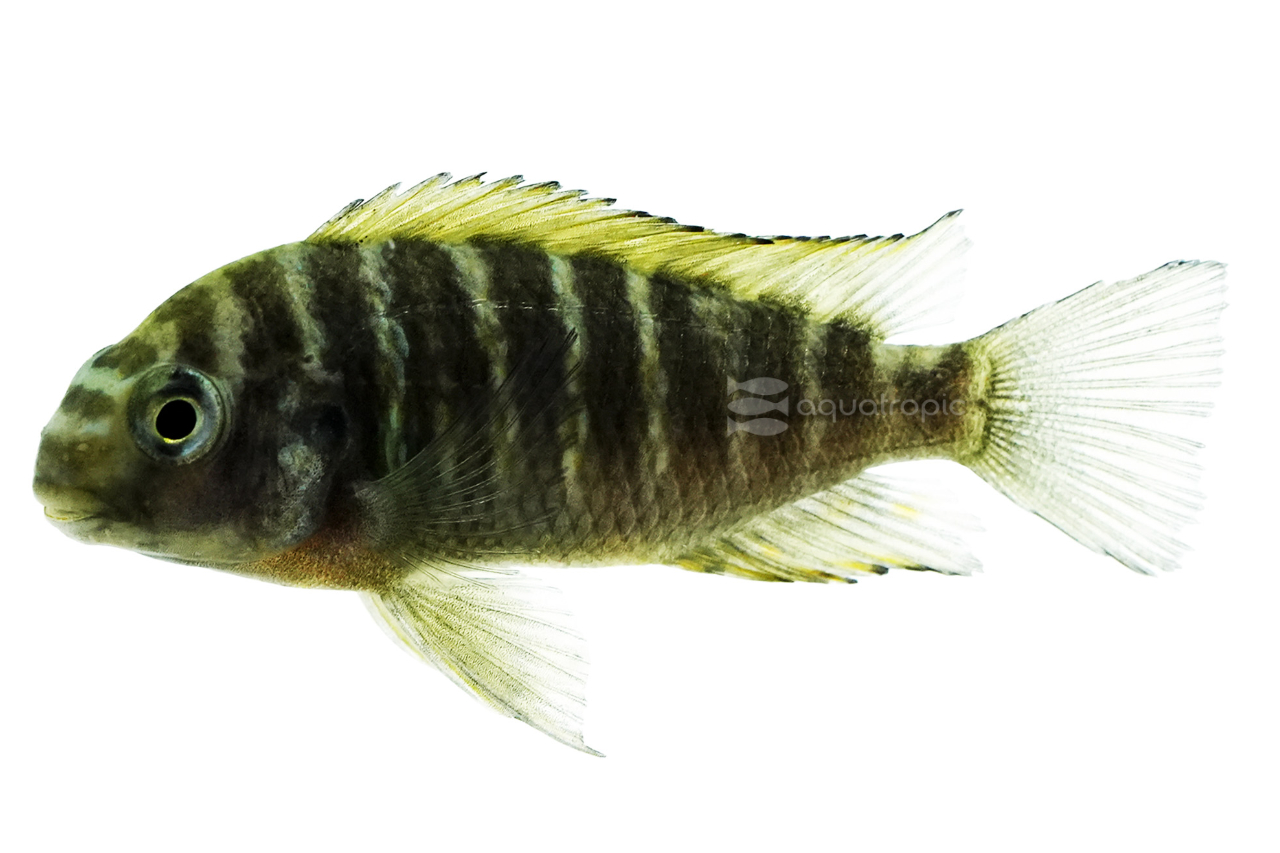
Recently, we've gotten a few really interesting ones in stock, with some similarly excellent names. A strong front runner for best name on a Tropheus moorii cichlid has got to be the Golden Kazumba Cichlid. The gold medalist of fish fights, this gilded bully is a swimming Olympic trophy with fins that are usually a darker color; in prime condition, all the fins are a deep orange, over the golden body, this is quite a site.
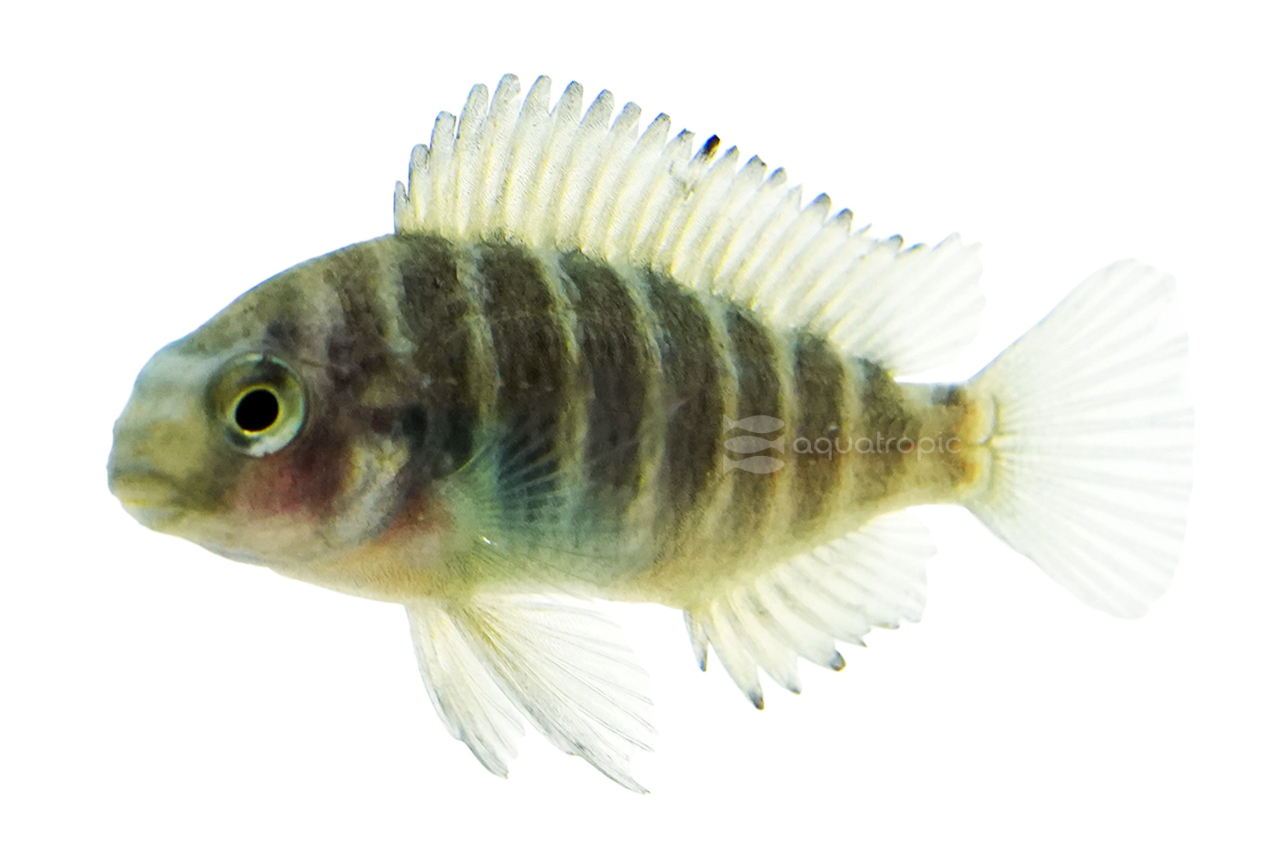
Looking for some red fireworks to match with that Golden Kazumba? Check out Red Chimba Tropheus, very similar markings, but a deep red color where the gold would be on the Kazumba. Their gorgeous, but they are also tiny little gladiators in tanks with other cichlids. Some of these fish will develop dark vertical barring in between the rows of deep red, and some will have darker red, almost black heads. They're all gorgeous, feisty and flashy. It's a good look.
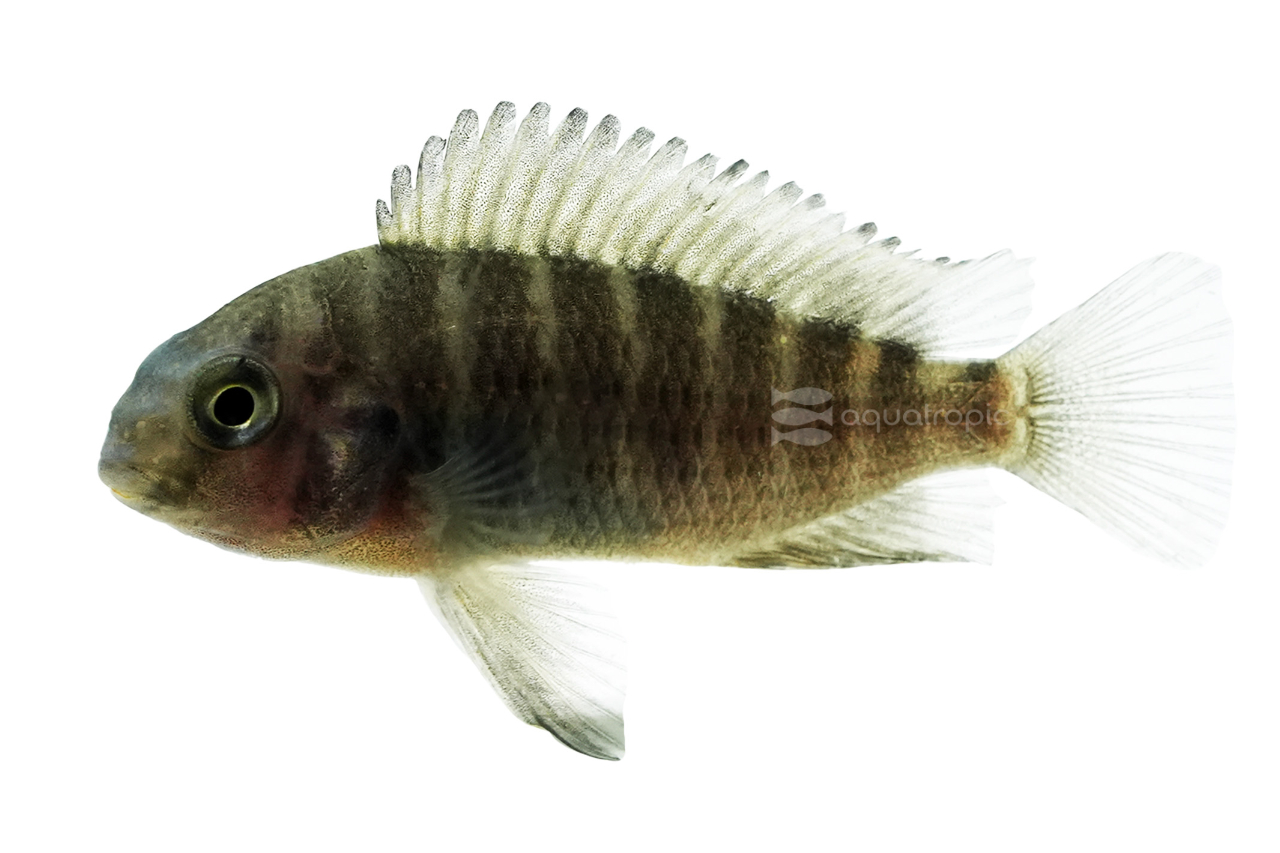
'Mpulungu' Tropheus are as hard to describe as they are to pronounce. Yeah, go ahead and try that name out! This being said, they are gorgeous, they have a face made of starlight blue spots and a side that looks like a supernova somewhere between yellow and orange or both! This coloration is what earned the Mpulungu its other common name: The Sunspot Cichlid. Their fins will be a muted gray, but later in their maturity may show the solar flare coloration of their flank.
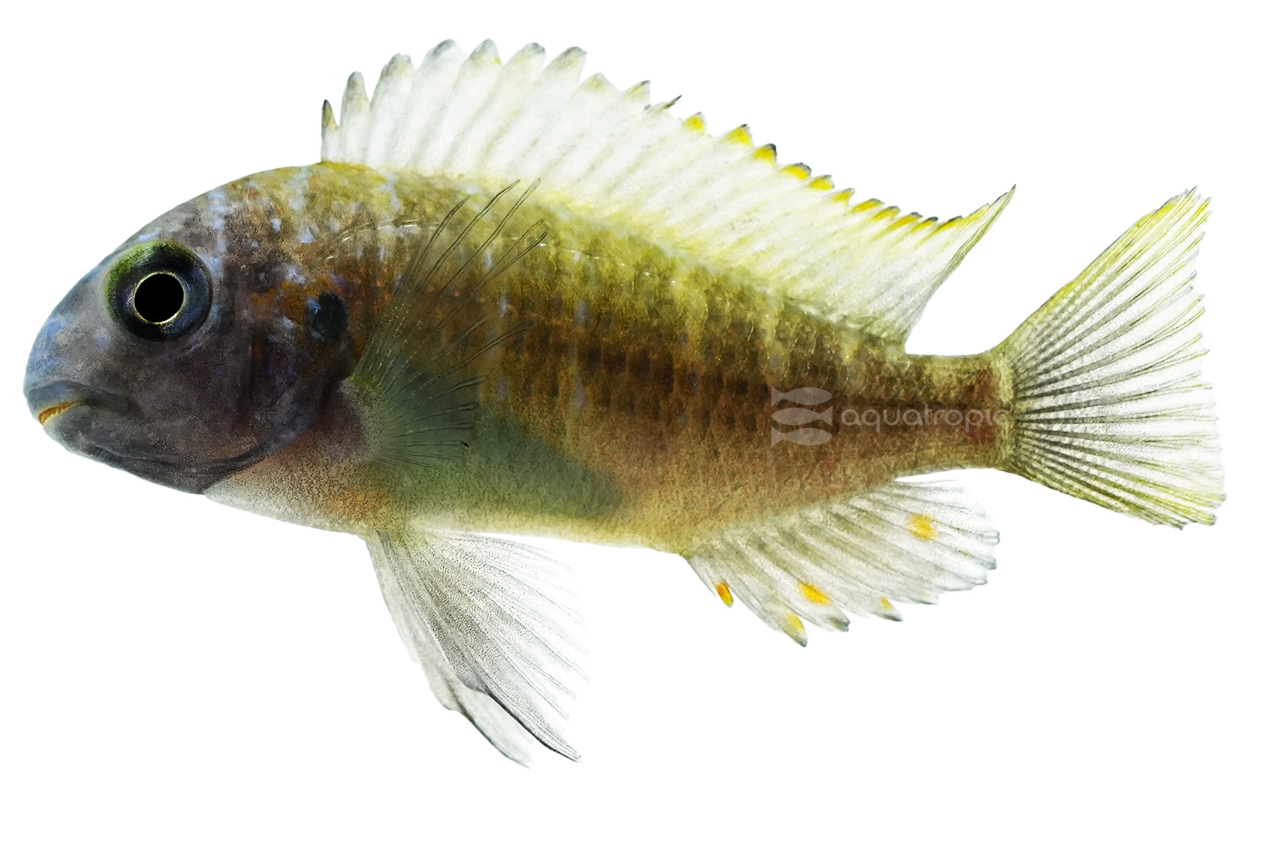
Somebody needs to tell the Chilambo to chill out bro. I mean, I get it, from the violet, blue, red head, and the yellow body with the greenish tail and fins, they definitely earned their other name “Yellow Rainbow Tropheus.” Nature slapped a coat of highlighter yellow on the side of this bully, and if he could talk, we'd never hear the end of the bragging. I still want a bunch of them though, they are seriously gorgeous.
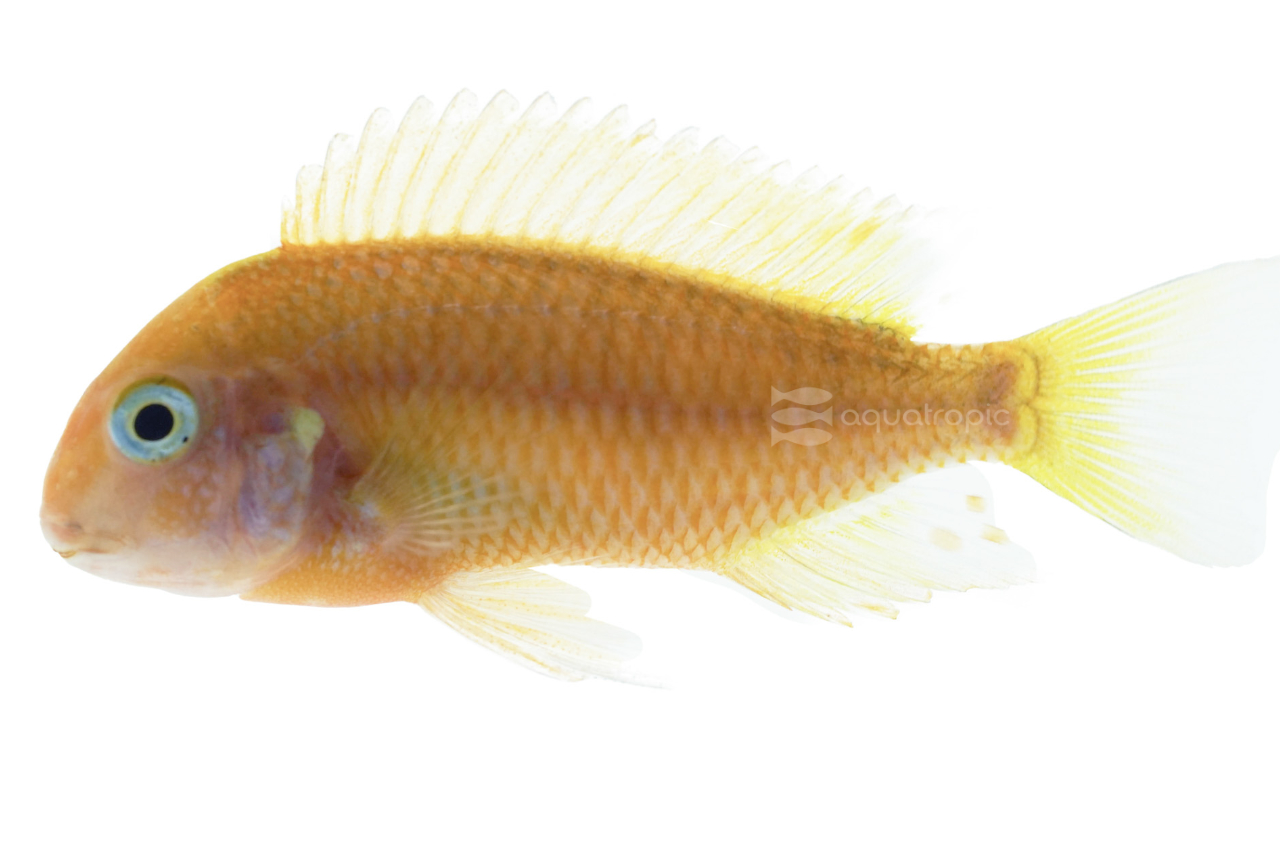
You're thinking maybe redder is required? Check out Red Bishop Tropheus, which are often shiny gold when young, but develop into a metallic pink, red with golden highlights in the tail scales, the almost the same color as a saltwater snapper being had for lunch somewhere in the Florida Keys. If you're looking for blingy have a look at this fishy.
We've recently gone into some depth on keeping Tropheus Cichlids, and so we're not going to get into this too much but here's the down and dirty: these fish are algae eating grazers that run little farms. They defend these farms to let algae grow. This means they can get awful feisty with anything that comes on the farm that is likely to rob it. So, you either need to keep them as a single individual with a bunch of other fish that don't look like other cichlids, or you need to keep so many Tropheus together that they can't defend a space, and aggression gets distributed as a result. If you want to go that route, keep at least a dozen, (then you can call them the dirty dozen) and more if you have a bigger tank (but sadly with a less cool name). Add all the fish at once, and don't attempt to add new fish unless moving everything to a new tank for a while. You can go one of two routes when scaping a Tropheus tank, the first route is to use only sand in an effort to not give the fish a territory to claim. The other route is to use tons of rock to give the fish a thousand ways to elude each other (we recommend a sand substrate either way).
Feeding your Tropheus moorii the right stuff is key. These grazers can easily get too much protein which can give them... how to put this delicately... some blockage issues. Further compounding this is that they'll eat just about anything but shouldn't. Get them as much green as possible and skip super high protein stuff. In house, we feed Nutramar Algae and Color Boost Shots and Complete Pellets, as well as Gamma Vegetarian Diet, and Gamma Brine + Spirulina, they'll also happily mow down Nutramar Nori and Ogo!
For those of you looking for the deep dive on keeping Tropheus Cichlids, check out our article here: https://www.qualitymarine.com/news/tanks-teeming-... it's worth the read. This is an opportunity for a really cool display. Too few people look at a tankful of Tropheus as a legitimate option, but we're here to tell you that they are all missing out. These fish will squabble and chase, move sand and rocks around, even the population will change as some successful breeding can happen! On top of this there is a great variety of incredibly colored variants to try. If you're looking for inspiration on your next water box, hopefully you just found it. Head to your LFS ASAP and tell them Aquatropic sent you.